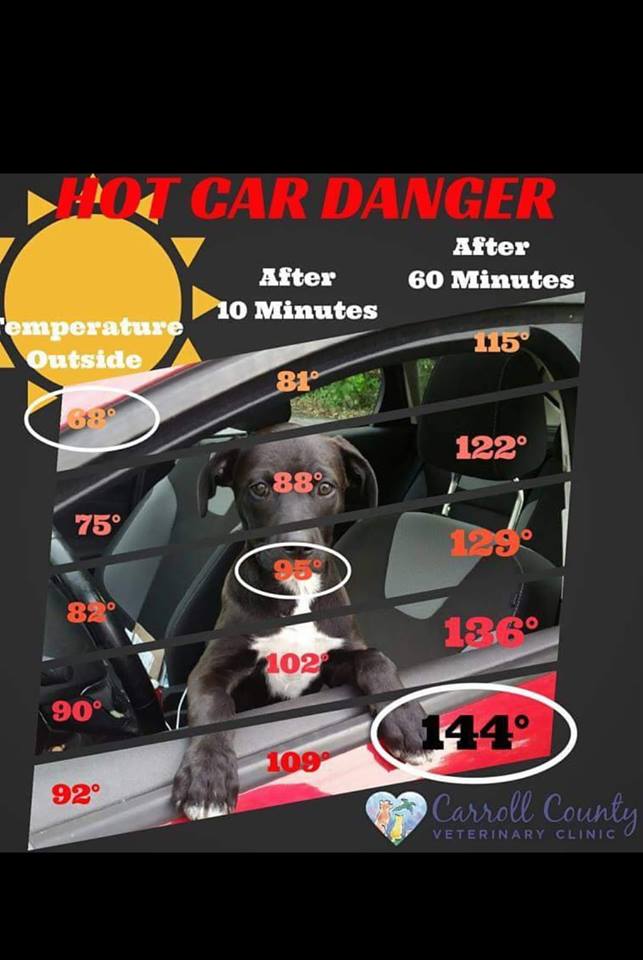
Summer is here! Everyone is having fun outside with their furry companions playing ball, hiking, and swimming. It’s wonderful to be able to spend time outdoors with your dog but be very careful during these hot days. Heat stroke with dogs can come on very quickly and can be fatal if you are unaware of symptoms of it and you do not have your pet treated immediately if they do show symptoms.
Humans have sweat glands that help us to cool off when we become hot however dogs do not. They rely on panting to help them cool down and can overheat in as little as 10 minutes in hot weather due to their inability to keep their body temperature normal through panting. Those breeds with the “smooshed in” faces like the pug, lhasa apso, bulldog, pekingese and others like those have an increased chance of heat stroke as well as older dogs. Here are some signs to watch for with your pet when you are outside and what to do if you see them.
A dog’s normal body temperature is around 101°F. Anything over 103°F is considered high and over 105°F is extremely serious. Initially the pet will appear distressed, pant excessively and become very restless. As heat stroke progresses they may start to drool from the nose and/or mouth. They may then become unsteady on their feet and you may notice their gums turning blue/purple or bright red in color which is a sign of inadequate oxygen and they may start to seizure. A pet showing any of these symptoms needs to be seen by a veterinarian immediately. Make sure to remove your pet from the environment immediately to a cooler area and if possible get the pets’ temperature so you can make your veterinarian aware of how high it is. It is important to get your pet cool however, cooling them too rapidly can be harmful as well. Using ice or submerging them in cold water will actually DELAY cooling the innermost structures of the body because they will cause superficial blood vessels to shrink forming an insulating layer of tissue that actually hold the heat inside. Once you get your pet to the veterinarian they will need to be put on intravenous fluids to help cool them and have bloodwork run to check their internal organ function as high temperatures can cause damage to their organs. If the pet is left untreated or not treated in time there can be irreversible internal damage done.
If you have any questions concerning heat stroke please call our office at 410-848-3100.
Reference:
www.vin.com

